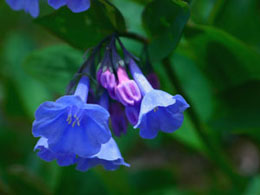A rain garden is designed to use the excess water from rain and storms. Rain garden plants are the ones that can withstand a lot of moisture without rotting. This article lists the specific plants that you can have in a rain garden.

A rain garden is like any other garden, either as a part of a huge garden or part of a suburban landscape. In most of the large areas, these gardens are added as borders or as entry features; whereas, in landscaping they are used as features that beautify parking lots, sidewalks, traffic turns, etc. Rain garden plants are mostly grown in locations where water can accumulate without stagnating.
A rain garden is designed to imitate the hydrological action of a forest. Water is captured in a garden which is dug and shaped like a basin that uses specific water intensive plants. Rain garden plants reduce the levels of nitrogen, phosphorus, and the overall sediment that gets drained in the garden. The treatment on the water affects waste or pollutants by bioremediation (use of microorganisms) that can break down undesirable substances. These gardens are mainly of two types: under-drained and self-contained. Both types are used to reduce water runoff volumes, improving storm water quality, and to facilitate infiltration of water into the soil. Some of these gardens have drainage systems that move excess water into a conventional storm sewer pipe system.
Types of Plants
Rain gardens are created using plants that can withstand extreme moisture, as well as thrive in it. Most horticulturists recommend plants that are fuss-free, have good root systems, and utilize the water and nutrients available in the soil. Trees, perennials, shrubs, wildflowers, can all be incorporated. Invasive or noxious species should be avoided, as they would take over most growth, and ruin the design of the garden. Here is a state-wise list of plants that are easily available.
- Delaware: New England aster, blue flag iris, woolgrass, soft-stem bulrush, Canada rush, cardinal flower, and arrow arum.
- New Jersey: Virginia bluebells, wild geranium, joe-pye weed, white wood aster, Canada anemone, swamp milkweed, and white turtlehead.
- Maryland: Ebony spleenwort, Christmas fern, bottlebrush grass, wild ginger, smooth blue aster, black snakeroot, marsh marigold, and white heath aster.
- Alabama: River birch, sweet pepperbush, oakleaf hydrangea, cardinal flower, indigo, and redbud tree.
- Other Plants: Turkey tangle fogfruit, common blue violet, American water-willow, dwarf palmetto, eastern gamagrass, swamp milkweed, desert false indigo, and inland sea oats.
Rain gardens have specific uses. They can add to the aesthetic appeal of an otherwise boring suburban landscape. They prevent storm water from collecting and stagnating. These types of gardens are incorporated in storm water management plans. They are easy to maintain as they require no additional water and very little fertilization. Annual cleaning and pruning usually helps keep them in good shape. It helps to improve water quality by filtering out pollutants and foreign substances. The plants mentioned above attract a lot of birds and insects like butterflies.






 A rain garden is like any other garden, either as a part of a huge garden or part of a suburban landscape. In most of the large areas, these gardens are added as borders or as entry features; whereas, in landscaping they are used as features that beautify parking lots, sidewalks, traffic turns, etc. Rain garden plants are mostly grown in locations where water can accumulate without stagnating.
A rain garden is like any other garden, either as a part of a huge garden or part of a suburban landscape. In most of the large areas, these gardens are added as borders or as entry features; whereas, in landscaping they are used as features that beautify parking lots, sidewalks, traffic turns, etc. Rain garden plants are mostly grown in locations where water can accumulate without stagnating.